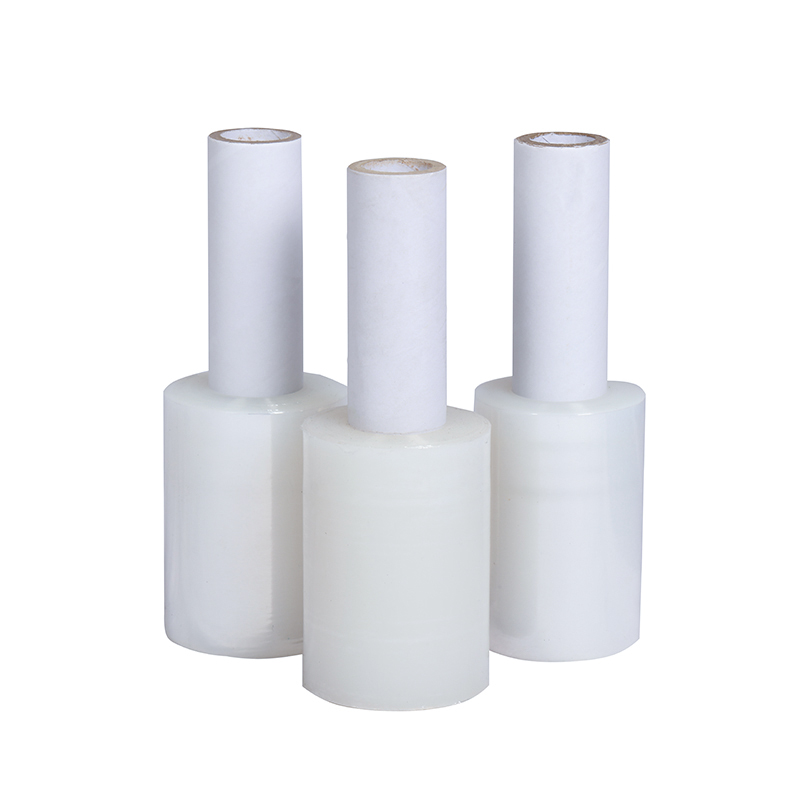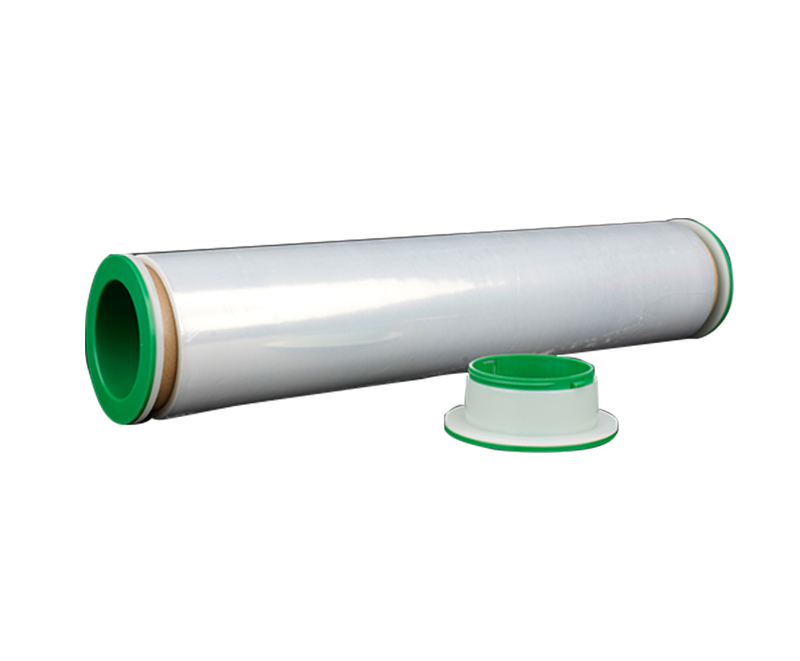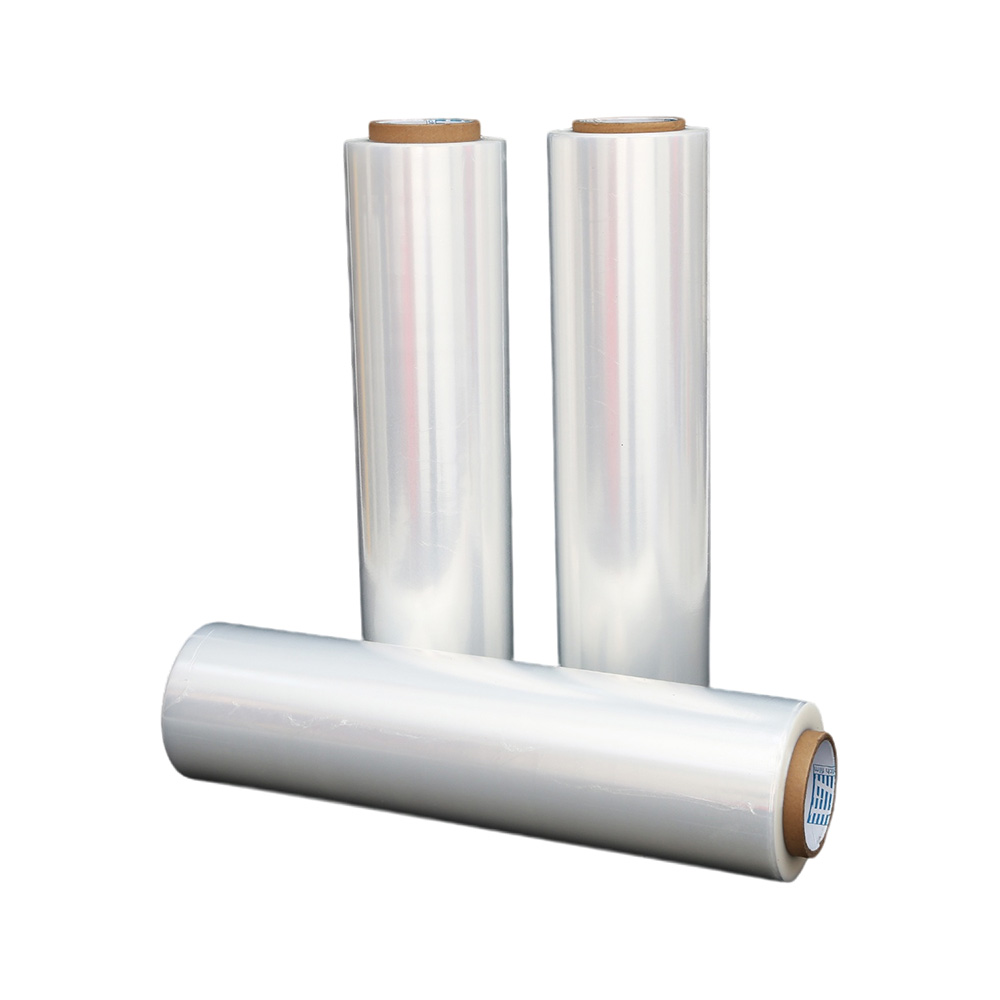How do Automation Technologies Enhance Productivity in Stret
Source:How do Automation Technologies Enhance Productivity in StretTime:2023-09-16Visitors:
Introduction
In today's fast-paced world, the role of stretch film in packaging cannot be overstated. Whether in the food, logistics, or manufacturing industry, securing and protecting your products during transit is paramount. Understanding the nuances of its production can be enlightening for businesses seeking to purchase stretch film.
This article explores how automation technologies revolutionize stretch film manufacturing, benefiting manufacturers and buyers. We will delve into the advantages of automation, including improved product quality, enhanced production efficiency, cost savings, and supply chain stability. But first, let's examine the fundamental role of stretch film in packaging.
The Role of Stretch Film in Packaging
Stretch film, a versatile and indispensable packaging material, plays a pivotal role in ensuring the safety and integrity of goods during transportation and storage. Its ability to securely wrap around products of various shapes and sizes makes it a preferred choice for industries worldwide. Whether bundling products on a pallet, protecting goods from dust and moisture or securing fragile items, the stretch film does the job effectively.
In your quest to find the proper stretch film manufacturer or wholesale stretch film supplier, understanding the impact of automation on the manufacturing process is essential. So, how exactly does automation enhance productivity in a stretch film factory? Let's dive into the details in the following sections.
Automation in Stretch Film Manufacturing
Automation technologies have brought about a transformation in the way stretch film is produced. Stretch film factories have embraced automation for several key reasons:
1.Improved Product Quality
Automation ensures a higher level of consistency and precision in the manufacturing process. Stretch film produced with automated systems tends to have fewer defects and variations, guaranteeing a consistently high-quality product. Buyers can trust that each roll of stretch film meets the stringent standards set by the factory.
2.Enhanced Production Efficiency
One of the primary advantages of automation is its ability to streamline production processes. In stretch film factories, automated machinery can perform tasks with incredible speed and accuracy, reducing production cycle times and increasing overall output. This efficiency translates to cost savings for both manufacturers and buyers.
3.Cost Savings for Buyers
Buyers of stretch film can benefit significantly from integrating automation technologies in factories. Manufacturers often pass on the savings to their customers when production becomes more efficient and cost-effective. This competitive pricing makes stretch film an even more attractive packaging solution for businesses of all sizes.
4.Ensuring Consistent Supply
Supply chain stability is a critical consideration for buyers of stretch film. Automated systems in stretch film factories minimize disruptions in production. This means buyers can rely on a consistent supply of stretch film, even in challenging times or increased demand scenarios.
Improved Product Quality
Automation technologies play a pivotal role in enhancing the quality of stretch film. Manufacturers that integrate automation into their processes can achieve greater consistency and precision in production. Here's how:
- Consistency: Automated systems ensure that each roll of stretch film is produced with the exact specifications, reducing variations and defects. This level of consistency is vital for buyers who require uniform quality for their packaging needs.
- Precision: Automation enables precise control over the stretching and thickness of the film. This means that the film's properties, such as tensile strength and stretchability, can be finely tuned to meet specific requirements, making it suitable for various applications.
- Quality Assurance: Automated quality control systems can detect and reject subpar products in real time. This minimizes the chances of defective stretch film reaching buyers, further ensuring product quality.
For buyers, the assurance of high-quality stretch film is crucial, as it directly impacts the safety and security of their products during transit and storage.
Enhanced Production Efficiency
Automation significantly increases production efficiency in stretch film factories. Here's how it achieves this:
- Speed: Automated machinery can perform tasks much faster than manual labour. This leads to shorter production cycles and increased output, allowing manufacturers to meet growing demand without compromising quality.
- Reduced Labor Costs: Automation reduces the reliance on manual labour, which can be costly and subject to human limitations. Manufacturers can allocate human resources to more skilled tasks while machines handle repetitive and labour-intensive processes.
- Minimized Downtime: Automated systems can operate 24/7, minimizing downtime due to shifts, breaks, or fatigue-related inefficiencies. This continuous production capability ensures a steady supply of stretch film for buyers.
The enhanced production efficiency resulting from automation benefits buyers by potentially lowering costs and ensuring timely deliveries.
Cost Savings for Buyers
Buyers of stretch film often find cost savings when working with manufacturers that have embraced automation:
- Competitive Pricing: Manufacturers can offer more competitive pricing for their stretch film products due to reduced production costs resulting from automation. Buyers can take advantage of these cost savings to optimize their packaging expenses.
- Customization without Price Premium: Automation allows for greater customization of stretch film properties (e.g., thickness, length, colour) without incurring significant price premiums. This flexibility enables buyers to tailor stretch film to their specific needs.
- Long-Term Savings: High-quality stretch film produced with automation is less prone to damage during use, reducing the need for replacements. This translates to long-term cost savings for buyers.
Buyers should consider the cost benefits when selecting a stretch film supplier, as automation can directly impact the overall cost-effectiveness of their packaging solutions.
Ensuring Consistent Supply
Supply chain stability is a top priority for buyers, and automation plays a critical role in achieving this stability:
- Reduced Supply Disruptions: Automated systems are less prone to disruptions caused by factors like labour strikes, worker shortages, or human errors. This means buyers can rely on a consistent supply of stretch film even during challenging circumstances.
- Adaptability: Automation allows manufacturers to adapt to changes in demand quickly. Whether it's a sudden surge in orders or a need for customizations, automated systems can respond efficiently, ensuring buyers' requirements are met.
Automation technologies have transformed the stretch film manufacturing landscape, offering significant benefits to both manufacturers and buyers. Whether you're a stretch film factory looking to enhance your production capabilities or a buyer seeking cost-effective and reliable packaging solutions, understanding the impact of automation is essential. Stay tuned as we explore the future of automation in the stretch film industry in the following sections.
The Future of Automation in Stretch Film Factories
As we look ahead, it's clear that automation will continue to shape the future of stretch film manufacturing. Here are some trends and developments to keep an eye on:
- Advanced Materials: Automation will enable manufacturers to experiment with and produce stretch films using advanced materials. This could lead to stretch films with improved properties, such as enhanced puncture resistance, UV protection, or biodegradability, meeting the evolving needs of various industries.
- Data-Driven Insights: Automation systems generate vast amounts of data about the production process. Manufacturers increasingly use data analytics and machine learning to optimize production, reduce waste, and improve product quality. Buyers can benefit from this by accessing even higher rates and more cost-effective stretch films.
- Customization: Automation will make it easier for manufacturers to offer highly customized stretch film solutions. Buyers will have the ability to order stretch film tailored to their specific requirements, whether it's for unique product shapes or specialized applications.
- Sustainability: Automation can contribute to sustainability goals by reducing material waste, energy consumption, and emissions. Buyers will have access to stretch film options produced with a lower environmental footprint, aligning with their sustainability initiatives.
Conclusion
In conclusion, automation technologies have revolutionized stretch film manufacturing, offering numerous advantages to stretch film factories and buyers. From improved product quality and enhanced production efficiency to cost savings and a consistent supply, automation has become a driving force in the industry.
Understanding automation's impact is vital for buyers seeking stretch film solutions. It ensures the reliability and quality of the stretch film they purchase and presents opportunities for cost savings and customization.
As we move forward, automation will continue to play a central role in shaping the stretch film industry, driving innovation, and meeting the diverse needs of buyers across various sectors. Whether you're a stretch film factory looking to stay competitive or a buyer aiming to optimize your packaging processes, embracing automation is critical to success in this dynamic industry.
Stay informed about the latest developments and trends in automation within the stretch film sector, and make informed decisions to meet your packaging needs effectively and efficiently.
Recommended Products
Ranked in the same article
- how to use the stretch film technology to r
- How can we get detailed price list?
- Five common quality problems of PE protecti
- Plastic film degradation
- How to guarantee punctual shipment for our
- Gauge to Micron and Millimetre Conversion G
- What is the difference between stretch film
- Testing the permeability of stretch film
- Stretch film temperature requirements
- Electrical wire film VS electrostatic film
- Why insufficient transparency of stretch w
Latest news articles
- The Influence of Stretch Film Thickness on
- Exploring the Versatility of PE Stretch Fil
- Testing the permeability of stretch film
- Factors That Affect the Stretching Function
- Stretch Film Wrap: Exploring Its Advantages
- What Is Red Stretch Film and What Are Its B
- PE stretch film how to cut?
- What Is the Difference Between Shrink Wrap
- What is Stretch Film Used For?
- The use of pe stretch film
- PE vs PVC Stretch Film: A Comprehensive Gui



